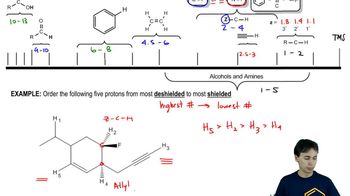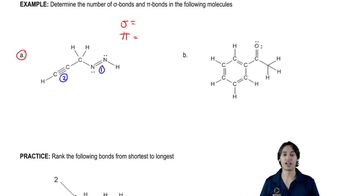Without referring to Table 14.1, label the proton or set of protons in each compound that gives the signal at the lowest frequency a, at the next lowest b, and so on.
c. ClCH2CH2CH2Cl

 Verified step by step guidance
Verified step by step guidance Verified video answer for a similar problem:
Verified video answer for a similar problem:



 11:44m
11:44mMaster 1H NMR Chemical Shifts with a bite sized video explanation from Johnny
Start learning